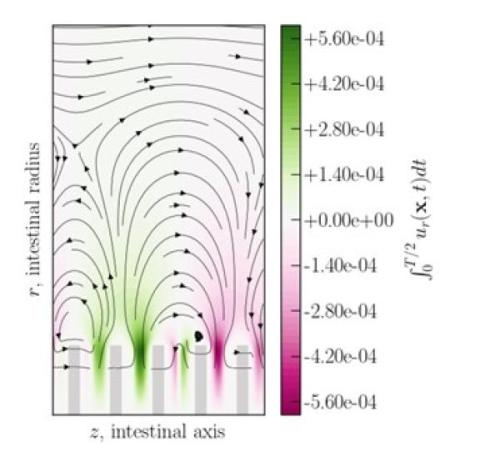- Imprimer
- Partager
- Partager sur Facebook
- Partager sur X
- Partager sur LinkedIn
Rohan VERNEKAR

Project description :
Understanding intestinal flows and nutrient particle transport vital for building models for digestion and absorption of food in the intestines. The small intestines have a lining of finger-like projections called the ‘villi’, which are generally assumed to passively increase the surface area for food absorption. These villi however also have motility, and move along the axial direction in an oscillatory manner, due to the contractions of the longitudinal muscles in the intestinal walls. This motion is called ‘pendular motion’. These motions affect flow not only at the villi scale, but also at the much larger organ scale.
The project seeks to build a versatile solver that can compute the fluid flow, coupled nutrient transport as well as the resulting nutrient absorption at the villi scale. The solver incorporates the experimental intestinal wall motility data to generate the flow, bringing together experiments, simulation and theoretical modelling. From these simulations we can understand the transport of diffuse nutrient particles such as sucrose or proteins, and compute their enhanced transport under complex flow conditions, at both the villi and larger organ scales. This would help in predictive modelling of mixing and absorption of digested matter along the intestinal tract, crucial for example in the case of orally ingested drugs.
Supervisor
Clément de Loubens
Starting date
01/11/2022
Funding
ANR
- Imprimer
- Partager
- Partager sur Facebook
- Partager sur X
- Partager sur LinkedIn